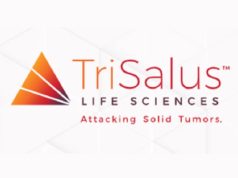
Transarterial chemoembolization (TACE) is a mainstay of locoregional treatment for hepatocellular carcinoma (HCC) in the intermediate stage. “The technique for this procedure, however, continues to vary, leading to a heterogeneity in the literature and making meaningful comparisons between treatments difficult,” said Jafar Golzarian, Minnesota, USA, at the Global Embolization Cancer Symposium and Technologies (GEST 2018 US; 17–20 May, Miami Beach, USA) reporting on a survey on the topic.
Golzarian, director, Division of Interventional Radiology and Vascular Imaging, University of Minnesota, USA is one of the founders and co-directors of GEST US, reported the main findings from a survey that obtained information on the technical aspects of international TACE practice in an effort to understand current treatment strategies as a first step towards standardisation of the technique.
Golzarian explained that the survey was an anonymous, 18-question, survey distributed via email to practicing members of five interventional radiology societies in English and Chinese. The researchers gathered a total of 1,160 responses from 62 countries.
The survey included questions on the type of practice the interventional radiologist was in (the majority of respondents, 369, was in academic practice) and the most common cytotoxic agent used in the treatment of HCC was doxorubicin (701 respondents reported using it over other agents including epirubicin, cisplatin, irinotecan, idarubicin and others). There were further questions on which procedure was typically performed for a single HCC, to which the majority of respondents (467) stated that they employed drug-eluting beads, while 265 employed conventional TACE. Nearly 175 said that it depended on the extent of disease and its location; very few (30) noted performing bland embolization.
Other questions elicited answers on the amount of ethiodised oil used (the majority of those who used cTACE, said they used more than 10ml) and about how ethiodised oil was mixed with the cytotoxic agent. Interestingly, answers to the latter revealed that 216 practitioners had no preference whatsoever whether this was mixed as oil-in-water (which 87 preferred) or water-in-oil (which 216 preferred).
There was also no consensus on follow-up protocol, but the majority (634) preferred to use CT over MR (307) and other modalities (49). With regard to the criteria employed to determine tumour response, 586 utilised modified RECIST and 224 used RECIST, followed by 61 who used EASL and 49 who reported ‘other’.
Conclusion
“In conclusion practitioners across diverse geographies differ in the way they perform TACE for the treatment of HCC. These differences lead to difficulty in comparing studies in this field. We are driven by the lack of high-level data to guide treatment. Further research and consensus panels are needed to help determine the most effective technical methods to perform TACE,” said Golzarian.













